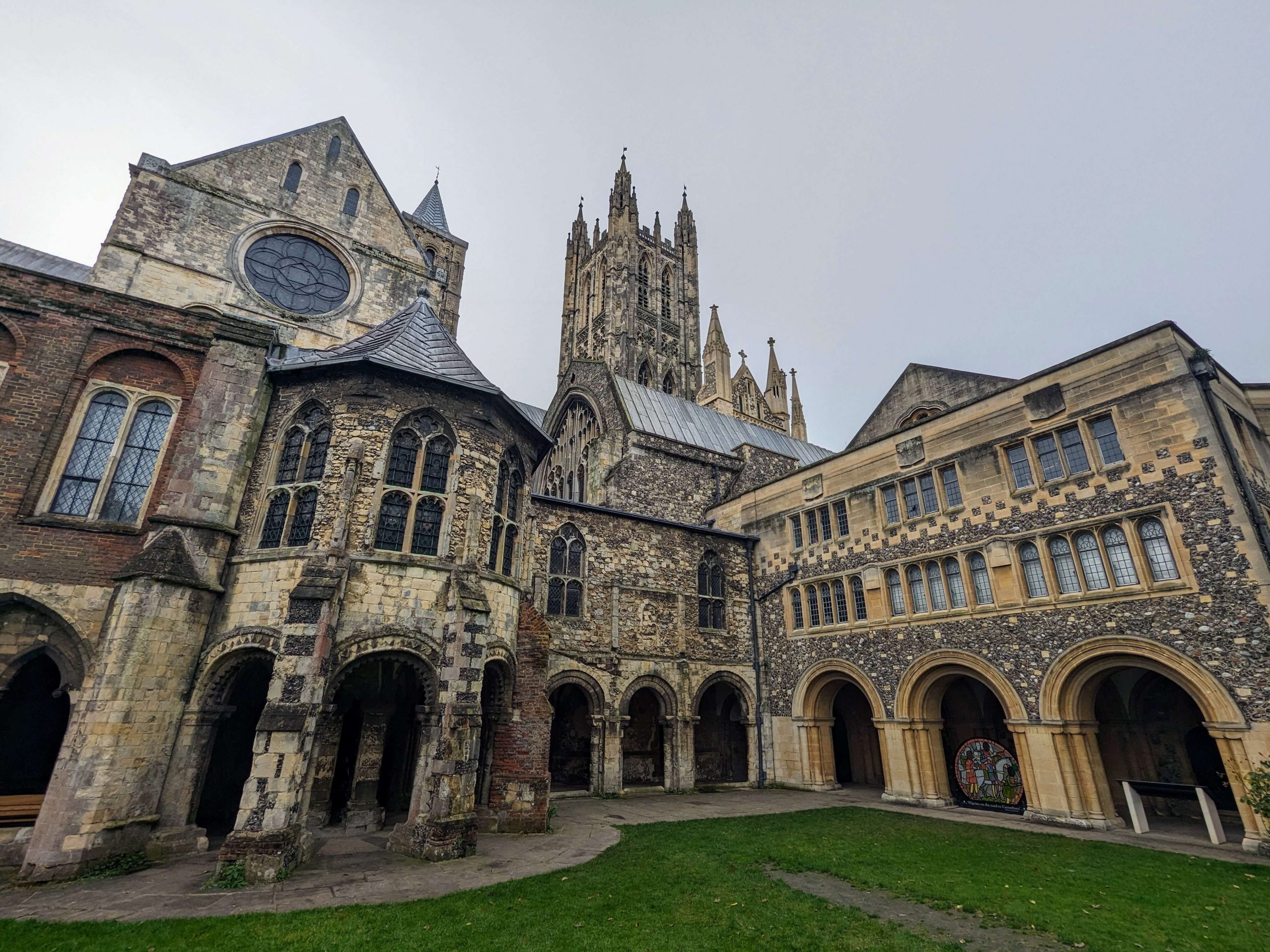Canterbury Cathedral is the oldest Cathedral built in England, its origins can be traced back as far as 597. It is the seat of the Archbishop of Canterbury, the spiritual head of the Church of England. It held immense significance as one of the most popular pilgrimage destinations in medieval England after the bloody murder of Thomas Becket. Over the centuries, the cathedral has been witness to religious feuds, the rise and fall of kings, Queens, the martyrdom of saints, the birth of religious movements, devastating fires, conquests and revolutionary events. In essence, it has borne witness to an astonishing array of momentous moments throughout history.
Origins
In 596, St. Augustine landed on British shores, sent from Rome by Pope Gregory the Great, his task was to convert the pagan people to christianity. In 597, following Augustines successful conversion to Christianity of King Ethelbert, he founded Canterbury Cathedral, dedicating it to Jesus Christ. Augustine built the cathedral on top of an earlier Roman road, which he may have thought would give the cathedral more stability.
In the spring of 1002, Anglo-Saxon King Æthelred the Unready and Emma of Normandy, were married at Canterbury Cathedral.
Saint Alphege
In 1011, the Cathedral was badly damaged from viking raids and the archbishop was taken hostage. He was murdered by his captors in 1012, making him the first of five martyred archbishops at Caterbury.


Norman Canterbury
Just after the Norman conquest of England in 1066, a terrible fire broke out at the Cathedral in 1067, completely destroying it.
In 1070, William the Conqueror appointed his trusted friend Lanfranc as Archbishop of Canterbury. Lanfranc set about rebuilding the cathedral based on a design similar to his church in Normandy using French limestone.
The new structure was situated approximately 5 metres to the south of its predecessor and was designed as a cruciform structure. It featured an aisle-flanked nave with a total of nine bays, twin towers at the western facade, transepts without aisles but equipped with apsidal chapels, a modest crossing tower, and a compact choir section culminating in three apses.
When viewed from above you can clearly see the building’s structure in the shape of a cross. It took Lanfranc seven years to rebuild the cathedral, whose size and splendour far exceeded the one it had replaced. The interior of the cathedral was also noted as also being richly decorated with paintings and stained glass windows.
Although Lanfranc had a magnificent cathedral he was still unsatisfied, he wanted to be the undisputed leader of England’s church, his rival to this position was the Archbishop of York, Thomas Bayeux, also a friend of King William. When appointing the archbishops, William failed to make clear who would ultimately be in charge. Both archbishops partitioned the pope but he instructed William to settle the matter.
Eventually, the Accord of Winchester was drawn up, concluding that Archbishop Lanfranc was more superior, but the document could be interpreted as specific to Lanfranc being more superior and not his predecessors. When Lanfranc died in 1089, Thomas claimed the agreement was ended. This disagreement continued for centuries, in a meeting in 1102 when the archbishop of York discovered his chair was minutely shorter than the archbishop of Canterbury’s chair he apparently flew into a rage, kicking his chair over.
Finally in 1352, the disagreement was resolved when the pope designated the Archbishop of York the Primate of England and the Archbishop of Canterbury the Primate of all England, concluding the Archbishop of Canterbury is the senior archbishop.
In 1174 a fire broke out in nearby cottages and embers passed in the breeze to the cathedrals roof which quickly spread to the cathedrals interior. Monks gathered what precious artefacts they could but the cathedral’s lead roof was rapidly melting down upon those below. The most holy eastern end of the cathedral was completely destroyed.
The rebuilding of the Cathedral was significantly funded by the substantial income generated from pilgrims who flocked to Canterbury. However, the story behind why pilgrims chose Canterbury as their preferred destination has its own intriguing narrative.
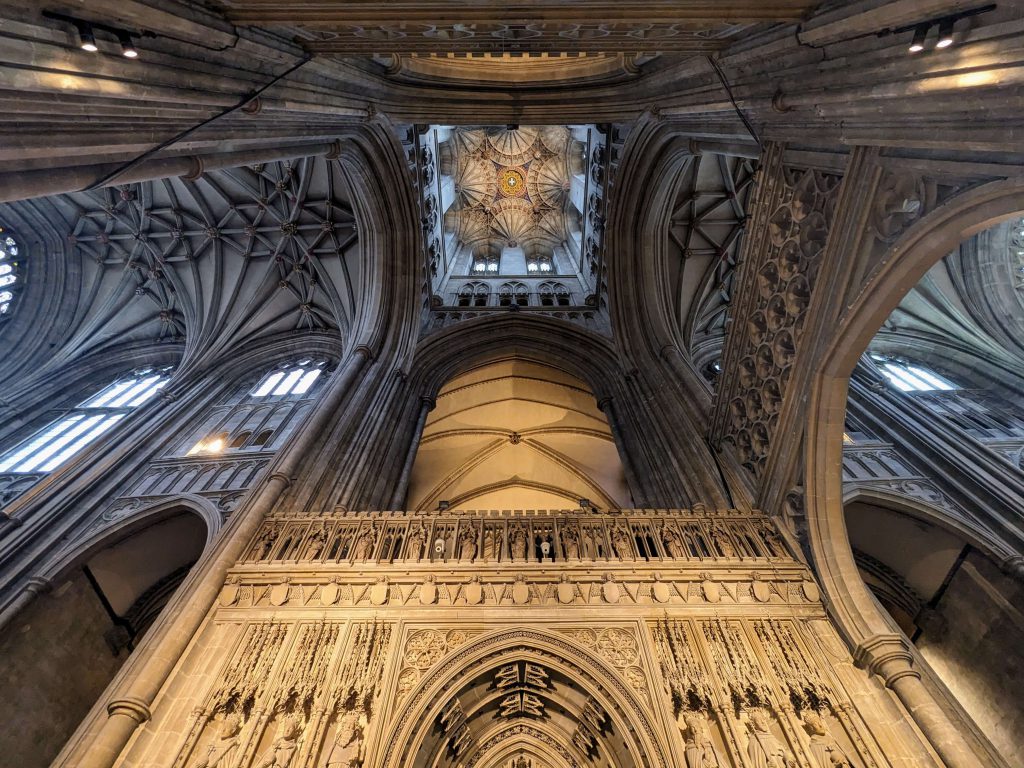
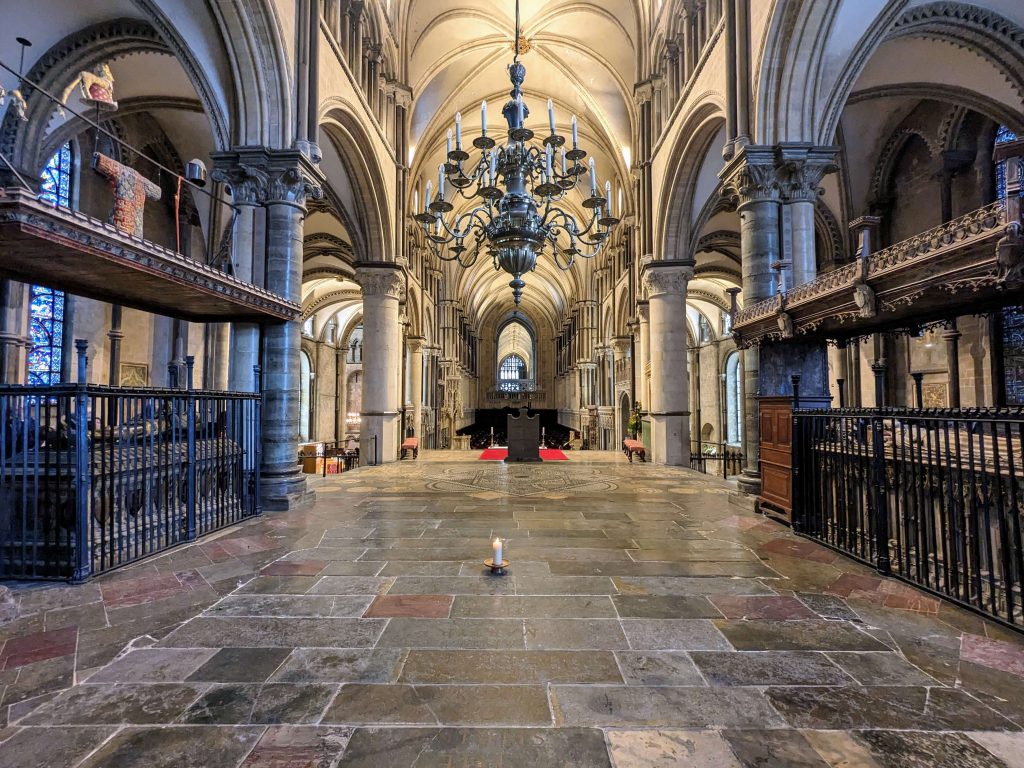
Savage Murder of Thomas Becket
In the most holy of places a brutal murder took place on Tuesday 29th December 1170. We need to look a little further back to understand the events that led to this tragedy.
Thomas Becket was a close friend of King Henry II who had appointed him Chancellor of England. When the position of Archbishop of Canterbury became vacant, Henry was very enthusiastic to appoint Becket into the role while continuing his existing role of Chancellor. Henry thought that with his close friend in this duel appointment, the Crown would be able to exercise a greater authority over the Church.
Becket did not share his friend’s ideas. He resigned his position of Chancellor and instead devoted his time and lifestyle to the Church
Henry expected Thomas to be his puppet archbishop but when Thomas did not follow the king’s expectations tensions rose and their friendship deteriorated. Thomas opposed laws that Henry put forward curbing powers of the church and this incited a bitter feud.
The feud between Becket and King Henry II escalated over time and on one evening Henry was overheard angrily exclaiming “Will no one rid me of this turbulent troublesome priest?”. Four of Henry’s Knights took this outburst literally and set off on a mission to fulfil their king’s wishes.
The four knights arrived at Canterbury Cathedral to fulfil what they believed were their king’s orders. The knights burst into the cathedral demanding to know where the traitor Thomas Becket was. Monks surrounded Becket to protect him but Becket went forward through them announcing “I am he and I am not a traitor to the King, I am just a priest, what do you want?”. There was a long moment of silence but the knights soon recomposed themselves and without hesitation struck Becket down gruesomely.
The murder shocked not only England but the entirety of Europe and King Henry II was worried about what repercussions this might have upon himself. Whether Henry really felt remorse or not about the murder that he claimed not to have sanctioned will never be known. Either way Henry knew he had to appear remorseful and did so in a very public way, he walked to Canterbury Cathedral barefoot and upon his arrival he allowed the monks to whip him on the back!
Right after Becket’s death, reports of miracles associated with his tomb started to emerge which encouraged an influx of pilgrims to Canterbury. In 1173 Becket was made a saint, pilgrims flocked to the Cathedral which created a substantial income.


Rebuilding
When a significant fire struck the church in the early 1170’s, which we previously mentioned, it presented an opportunity to reconstruct and transform the cathedral into a suitable shrine to honour the recently martyred Becket.
The task of rebuilding was placed in the hands of William of Sens, who brought with him expertise in the emerging French architectural style, now known as “Gothic.” In 1179, a tragic accident occurred when William of Sens fell from scaffolding above the high altar, some report that he died and others that he survived long enough to return to his homeland, France. Whichever is true, he had to retire from the project and let his assistant complete the work (William the English).
Between 1180 and1184 the Trinity chapel was added, creating a further magnificent shrine to house relics related to the saint Thomas Becket, including the top of his skull, which was struck off during his assassination. Becket’s remains were laid in the cathedral crypt until 1220. Other significant people to have been buried in the crypt include Edward “The Black Prince” and King Henry IV.
The shrine was placed directly above Becket’s tomb in the crypt. The shrine was described as wonderfully adorned with gold, silver and gems. Pilgrims continued to flock to the Cathedral, especially for when on occasion with enough pilgrims present, the shrine’s lid would be theatrically raised by ropes.
The shrine brought fame and created incredible income for Canterbury Cathedral. It is forever remembered in the timeless “Canterbury Tales” by Geoffrey Chaucer. Pilgrim badgers and other souvenirs were sold at the cathedral; it created a substantial income which was used to fund subsequent rebuilding. In 1489 the magnificent Bell Tower was added to the cathedral, at almost 240 feet high it could be seen for miles around and one that pilgrims were astounded at upon their journey

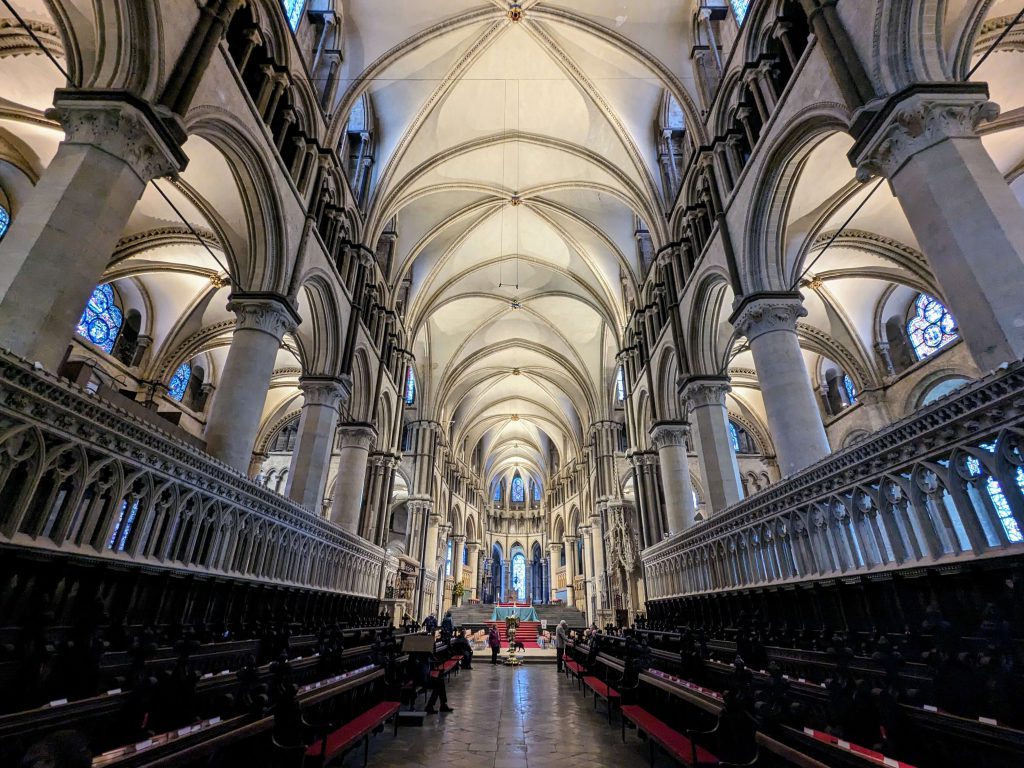
Dissolution of the Monasteries
In 1509 King Henry VIII was crowned King of England and during his reign the whole church would undergo a dramatic transformation. After over 20 years of marriage to Katherine of Aragon but without a male heir he set his sights on Anne Boleyn. The Pope refused to annul his marriage to Katherine. Henry appointed his friend Thomas Cranmer as Archbishop of Canterbury and he willingly annulled the marriage. The pope was outraged but Cranmer only used this situation to persuade Henry that he should not be beholden to Rome in his own kingdom and the path was set.
On November 28, 1534 CE, the Act of Supremacy was officially enacted, establishing the English king as the supreme head of the Church of England. With this act, Henry VIII’s authority within the Church surpassed any earthly power, placing him in a position second only to God Himself. In 1538 Henry began the dissolution of the monasteries, he declared Thomas Becket a traitor to the crown, his tomb and shrine were smashed to pieces. Today a simple candle marks where the tomb once stood.
Archbishop Cranmer remained loyal to Henry, after Anne Boleyn failed to produce a male heir it was he who again annulled Henry’s marriage, this time on the grounds of adultery, Anne was beheaded a few days later, making her the first English Queen to be executed.
Archbishop Cranmer’s loyalty to Henry never waivered, he oversaw the end of two more of Henry’s marriages. Tides changed after Henry’s death and the Catholic Mary seized the throne. Mary rounded up many protestants and had them executed, Cranmer was sentenced to death and burned at the stake following two years of torture at the Tower of London. Cranmer had been forced to sign a confession renouncing his protestant faith but when he was put upon the burning stake he had one last act of defiance left, he thrust his hand into the heart of the flames and proclaimed “this hand hath offended”, renouncing his confession just before the flames engulfed him.
After Mary I, the crown went to her half sister, Elizabeth I and England’s faith went back to being protestant. Canterbury Cathedral once again became a place of worship and the seat of the head of the Church of England.

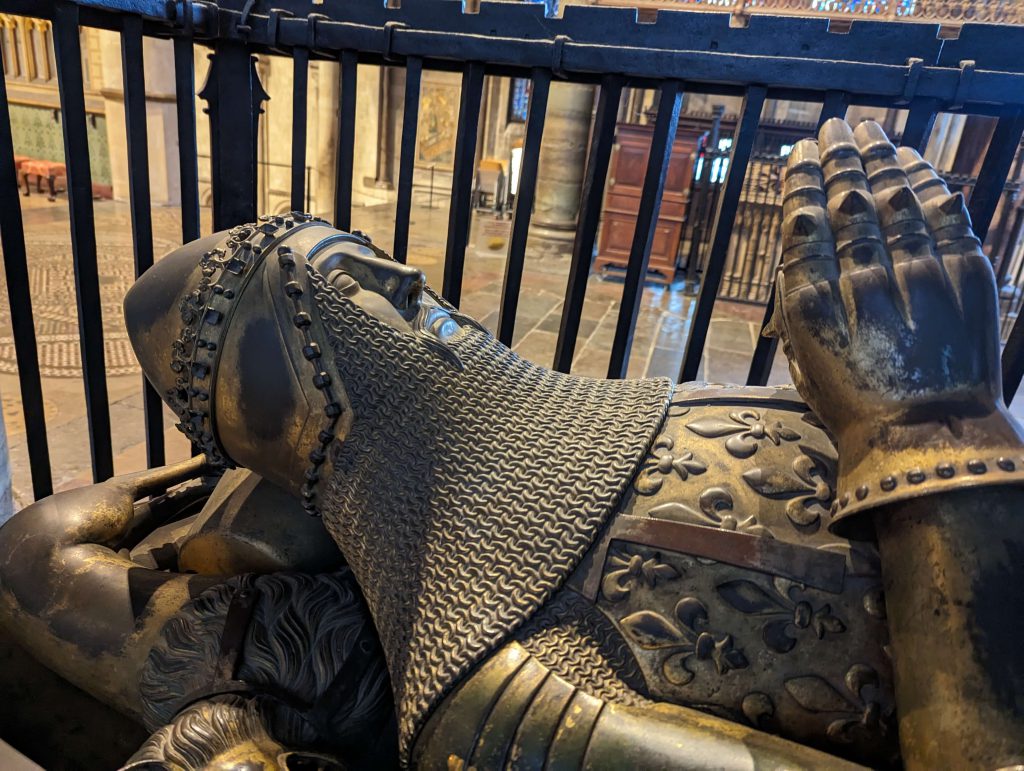
World War 2
Canterbury Cathedral enjoyed centuries of quiet worship until the onset of World War Two. During the war Hitler ordered his air force to target places of cultural significance, placing Canterbury high on the hit list. On 1st June 1942 relentless waves of German heavy bombers swept over Canterbury. A courageous team of volunteers, known as firewatchers, played a vital role during air raids. When the air raid sirens sounded, these individuals fearlessly ascended to the cathedral roofs and took direct action to dislodge any explosives dropped from the sky, kicking them to the ground. Other firewatchers would then work to swiftly extinguish the devices. Their heroic efforts helped protect the cathedral during the war.
Canterbury Cathedral is huge, it covers over 7500 sq metres, the nave is 525 feet long and the arch ceiling almost 85 feet high. It costs approximately a whopping £18,500 per day to upkeep. It is a designated Unesco World Heritage site with over a million visitors a year. Whether you are religious or not, the magnificence and size of Canterbury Cathedral leaves you in awe.

